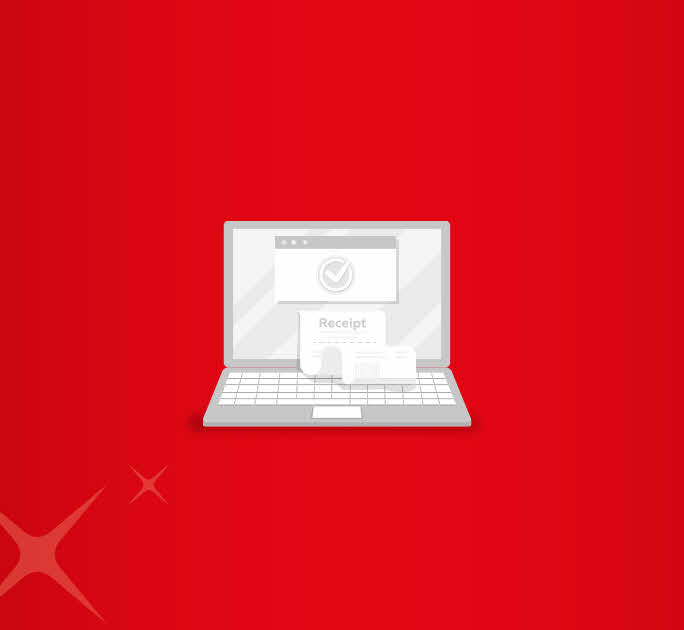- Save
- Invest
- Borrow
- Pay
- More
- Customer Services

What is MICR: Full Form, Meaning, and Its Role in Banking
How does MICR Code help in fast-tracking cheque clearances?
Key Takeaways
- MICR Code stands for Magnetic Ink Character Recognition.
- It is a unique nine-digit code to identify a bank and branch participating in the ECS Credit scheme.
- The RBI assigns every bank branch a unique MICR Code.
- IFSC Code and MICR Code are equally important for making financial transactions through NEFT, IMPS, and RTGS.
- MICR Code helps to speed up the cheque clearing process.
Have you ever noticed a unique set of numbers printed in magnetic ink on a cheque? This is known as the MICR Code. MICR stands for Magnetic Ink Character Recognition, a technology that ensures safe and efficient cheque clearance. But what exactly is MICR and how does it work? In this guide, we will explore the MICR full form, its uses and the role of the Magnetic Ink Character Reader MICR in banking transactions.
What is MICR code?
MICR or Magnetic Ink Character Recognition is a banking technology that uses special magnetic ink to print unique codes on financial documents. A Magnetic Ink Character Reader MICR scans and processes these codes to authenticate cheques and speed up bank transactions. The MICR Code is a nine-digit number that identifies the bank and branch involved in processing the cheque.
How does MICR technology work?
MICR technology uses magnetic ink and a unique font to encode financial data on cheques. A Magnetic Ink Character Reader MICR scans the printed characters and detects their magnetic properties to convert them into digital data. The MICR Code on cheques contains essential details like bank and account numbers. Since magnetic ink remains readable even if smudged, MICR ensures accuracy, prevents fraud and speeds up cheque processing. MICR is widely used in banking for secure transactions.
MICR Code in Cheque - Role and Functions
You generally need an MICR Code while filling application documents for financial instruments like investment portfolios, lumpsum mutual funds and SIPs. The MICR Code functions like a barcode for banks involved in transactions under the Electronic Clearing System ECS Credit. ECS Credit is used to authenticate the originality and legality of paper based documents in the banking system.
Decoding the MICR Code
The MICR Code comprises three parts:
- The first three digits represent the pin code of the city.
- The next three digits represent the bank code.
- The last three digits represent the branch code.
Features of MICR Technology
Magnetic Ink Character Recognition MICR technology is designed for secure and efficient processing of financial documents.
- Magnetic Ink Uses iron oxide-based ink for secure and accurate character recognition.
- Unique Font Special MICR font ensures readability by both humans and machines.
- High Accuracy Resistant to smudging and physical damage reducing errors.
- Security Difficult to counterfeit enhancing fraud prevention.
- Fast Processing Speeds up cheque clearance and financial transactions.
Benefits of MICR in Banking
Magnetic Ink Character Recognition MICR technology is widely used in banking for its security and efficiency. Some of its key benefits include:
- Enhanced security: Difficult to forge due to the use of magnetic ink.
- High accuracy: Reduces errors in cheque processing and data entry.
- Fast processing: Speeds up banking transactions and cheque clearance.
- Reliability: Works even if characters are smudged or marked.
- Global standard: Used across financial institutions for secure transactions.
MICR Code Example
The MICR Code for the Fort Branch of DBS Bank is 400641002 where
- The first three digits (400) represents Mumbai - the city code
- The next three digits (641) represents DBS Bank
- The last three digits (002) represents the branch code for the Fort branch.
How Different is MICR Code From IFSC?
|
Feature |
MICR Code |
IFSC Code |
|
Purpose |
Used for cheque clearance |
Used for online fund transfers |
|
Composition |
9-digit numeric code |
11-digit alphanumeric code |
|
Used In |
Paper-based transactions |
NEFT, RTGS, IMPS |
|
Scope |
Recognises bank, branch, and city |
Recognises only bank and branch |
Advantages of MICR technology
MICR technology offers a secure and efficient way to process financial documents with high accuracy.
- Enhanced Security – Difficult to forge due to the use of magnetic ink.
- High Accuracy – Reduces errors in check processing and data entry.
- Fast Processing – Speeds up banking transactions and cheque clearance.
- Reliability – Works even if characters are smudged or marked.
- Global Standard – Widely accepted in banking for seamless transactions.
Disadvantages of MICR technology
Despite its benefits, Magnetic Ink Character Recognition (MICR) has some limitations.
- High Cost – Requires specialized printers and MICR magnetic ink.
- Limited Use – Mainly used in banking, not adaptable for all industries.
- Complex Implementation – Needs specific fonts and equipment for proper functioning.
- Space Requirement – MICR characters take up more space than standard printing.
- Dependency on Ink – Only works with magnetic ink, making replacements costly.
Additional Uses of MICR Technology
While MICR technology is primarily used in banking, it also serves other industries requiring secure document processing.
- Government Documents – Used for secure printing of cheques, bonds, and legal papers.
- Corporate Payroll – Ensures accurate and fraud-resistant salary check processing.
- Retail Industry – Helps in verifying checks for secure transactions.
- Lottery & Ticketing – Prevents counterfeiting in lottery tickets and event passes.
- Financial Institutions – Used for processing money orders and other financial instruments.
Where Can I Find the MICR Code?
The MICR code is printed on financial documents to facilitate secure banking transactions.
- Bank Checks – Located at the bottom, displaying branch, bank, and account details.
- Demand Drafts – Printed to ensure secure and accurate processing.
- Bank Passbooks – Some banks include the MICR code for easy reference.
- Online Banking Portals – Available in account details for electronic transactions.
- Corporate & Government Documents – Used in financial instruments for verification.
How to Find MICR Code in Passbook and Bank Cheques
The MICR code is printed on key banking documents for secure and accurate processing.
- On Bank Cheques – The MICR code is printed at the bottom of every cheque, typically in the middle section. It appears in magnetic ink alongside the cheque number and account details. The first three digits represent the city, the next three indicate the bank, and the last three specify the branch.
- In Bank Passbooks – Many banks print the MICR code on the first page of the passbook, along with the branch name, IFSC code, and account number. If it is not visible, customers may request this information from their bank.
Since the MICR code is essential for cheque clearance and other banking operations, ensuring its accuracy is important when filling out financial documents.
Future Trends in MICR Technology
As banking and financial transactions continue to evolve, MICR technology is also adapting to meet modern security and efficiency demands. Some key trends shaping its future include:
Integration with Digital Banking – While traditional cheques are declining, MICR technology is being incorporated into digital cheque scanning and automated clearing systems.
Enhanced Security Features – Advancements in magnetic ink and encryption methods will further strengthen fraud prevention and data protection.
Automation in Banking – MICR-based cheque processing is becoming more automated, reducing manual intervention and improving transaction speed.
Hybrid Payment Solutions – MICR may continue to complement digital payment systems, ensuring secure and seamless transitions between paper-based and electronic transactions.
Global Standardization – Efforts to unify MICR codes across different financial institutions will improve cross-border banking and streamline international cheque processing.
Despite the rise of digital payments, MICR technology remains relevant due to its high accuracy and security, making it a key component in financial document processing.
When Is MICR Code Required?
The MICR code is essential for various banking transactions that involve cheque processing and fund transfers. It is required in the following situations:
- Cheque Clearance – Banks use the MICR code to quickly and accurately process cheques through the clearing system.
- Electronic Fund Transfers (EFTs) – Some financial transactions, including NEFT and RTGS, may require the MICR code for verification.
- Loan Applications – Banks may ask for the MICR code when processing loan disbursals linked to a specific branch.
- Setting Up Auto-Debits – It is often needed when authorizing automatic payments, such as EMI deductions or bill payments.
- Interbank Transactions – Helps in identifying the correct branch for seamless processing of demand drafts and other financial instruments.
Since the MICR code ensures error-free and secure transactions, it is important to use the correct code when required.
Final Note
For those who conduct regular banking transactions understanding what is MICR Code can be helpful. IFSC and MICR Code are equally important for making financial transactions through payment systems like NEFT RTGS and IMPS. While most people have embraced online fund transfers MICR continues to remain crucial especially for high value fund transfers via cheques.
-
What is MICR on my bank account?
The MICR code is a 9-digit number used for identifying a bank branch during cheque processing and electronic transactions. It is printed in magnetic ink on cheques and sometimes included in bank passbooks.
-
Are Cif and MICR code the same?
No, the CIF (Customer Information File) number is a unique identifier for a bank customer, while the MICR code is used to identify the bank branch for cheque clearance and fund transfers.
-
Where can I find MICR code without cheque book?
If you don’t have a cheque book, you can find the MICR code in your bank passbook, on the bank’s official website, or by contacting your branch.
-
Is the MICR code unique?
Yes, each MICR code is unique to a specific bank branch, ensuring accurate processing of financial transactions.
-
What is the character limit of a MICR code?
The MICR code consists of exactly 9 digits, divided into three parts: city code (first 3 digits), bank code (next 3 digits), and branch code (last 3 digits).









